You little naturalist, you! Part 3
Apart from investigating plants and flowers as we have discussed in Part 1 and 2 of this sequence, a naturalist would also be interested in examining animals. What you want to discover first is the role of small animals.
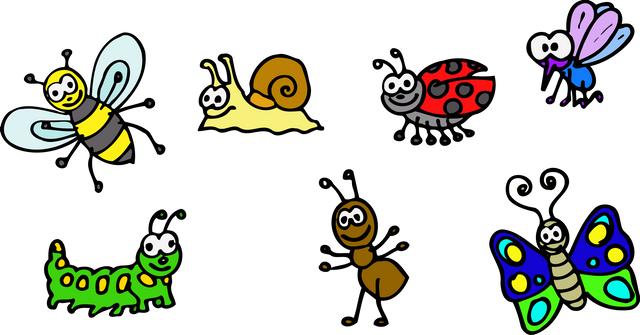
When investigating small animals always make a note in your nature diary of where you found them and what they may have been feeding on. Draw out food chains for each one if you can. A snail feeds on leaves but may then be eaten by a bird which in turn might be caught by a cat. Think how each animal is connected with its neighbors in this way.
Not even a specialist could identify all the animals you might find, but a good field guide will include all the most common species. Always handle tiny animals with care as it's very easy to damage them. Put them back where you found them when you have finished studying them.
Look closely at some damp soil with your hand lens. You will find an amazing variety of creatures there. The most important animals are the earthworms: they burrow through the soil, mixing and aerating it, living off decaying plant matter. Creep into your garden at night and you may see them at work, pulling leaves down into their burrows.
Make a worm farm!
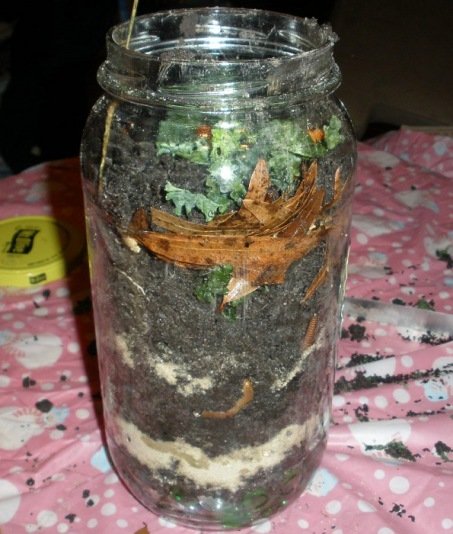
First of all prepare a large glass jar by filling it with damp sand and soil in alternate layers. Use a watering can to soak a patch of lawn with a dilute mixture of water and washing-up liquid. Collect the worms that come to the surface and rinse them immediately in tap water. Place the worms in the jar and add a layer of grass and dead leaves for them to feed on. Cover the jar with thick paper and leave it for a few days, then peel away the cover and look at what the worms have done. Sketch the different parts of an earthworm and see if you can work out how they reproduce.
Looking at slugs and snails:
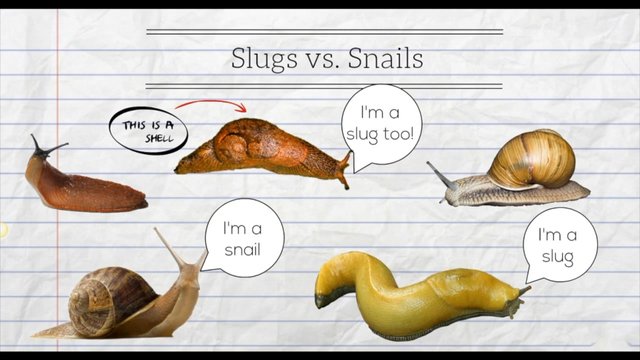
These animals live on growing plants and can be a serious pest in the garden. Look for them on and under plants at night, and on walls and tree trunks. In daytime, look in damp places where the slugs and snails hide to avoid drying out. Flower pots make a favorite hide-out. Place a slug on a sheet of glass and look from below. How does it move?
Hunting with pitfall traps:
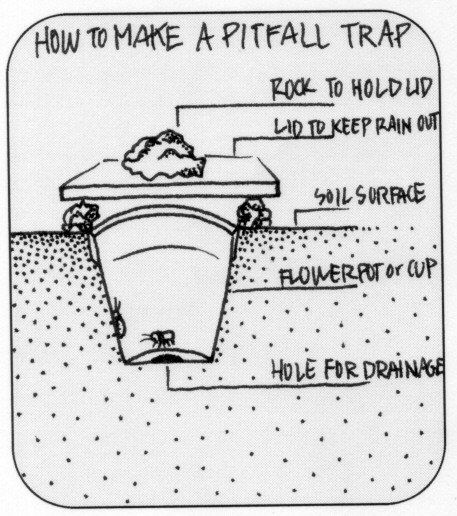
Get some jam-jars and bury them with their tops level with the surface, covering them with a roof of stone or bark to keep out rain. Bait with meat, fish or cheese and try comparing the catch from a variety of habitats - for example under a hedge, or near a compost heap.
How can you catch insects without touching it?
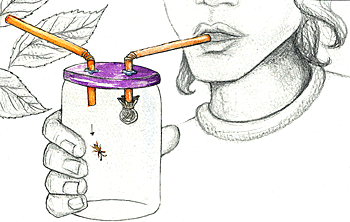
Try making a pooter! A milk bottle or jar will do for the container, which should be assembled as shown above. Pooters are ideal for "vacuuming up" small insects from flower heads or among leaf litter. Just make sure you suck at the right end!
Examine your catch in a dish, sorting the creatures into groups with the aid of a fine paint brush. Once you have identified the catch, release the specimens in their own habitat as soon as possible.
Beating bushes and netting insects:
Look at a bush carefully and see what animal life you can find on its leaves and stems. Are spiders building webs, caterpillars chewing leaves, or bugs sucking at the stems? Observation is the first step in understanding nature.
Try collecting from bushes and trees by hitting a branch sharply with a stick ad catching the creatures as they are shaken loose. Use a beating tray, a piece of material stretched over a wood frame, or even an upturned umbrella. Pooter up your catch for examination.
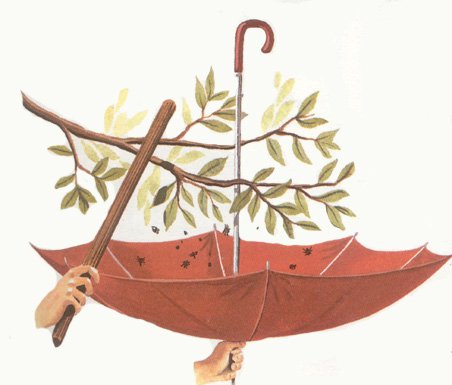
Flying insects:
These can be caught in a net made from a pair of tights and a wire coat hanger. A proper net can be bought too. The bag should be as long as your arm so that the end can be flipped over the frame to trap the insects inside.
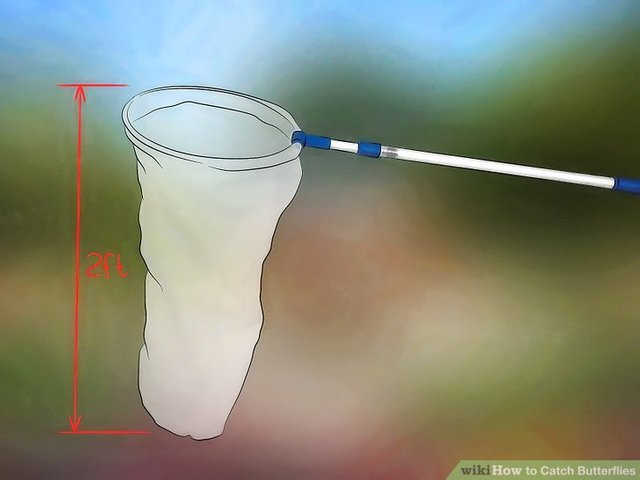
Be very gentle with butterflies: they are easily damaged. Release each specimen as soon as you have identified it.
Undertakers of the insect world:
A dead bird or rat brought in by a dog or cat can be the start of a fascinating experiment. Peg the body under some wire mesh in the garden or under a hedge. Note each day what insect visitors appear and how they use the food supply. Maggots from blowfly eggs may be predated upon the ground or rove beetles. Burying beetles may dig soil from beneath the carcass to bury it. These animals are "decomposers", another vital link in the food chain.
Catching the night-time fliers:
Many insects prefer the hours of darkness for their activities, the best-known being the moths, though some fly by day.
Sugaring
Buy some black treacle and add a few drops of amyl acetate. Add some beer too. Paint the mixture onto posts or tree trunks on a warm still night and watch what flies in for taste.
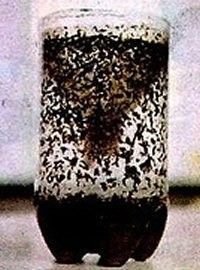
Source Light traps
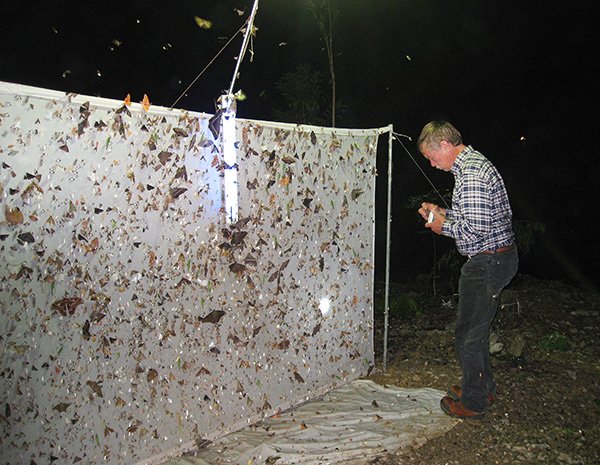
Use a pooter for small specimens, a jar for large ones.
Resources:
Previous posts:
Part 1 : https://steemit.com/steemiteducation/@bdmomuae/you-little-naturalist-you-part-1
Part 2 : https://steemit.com/steemiteducation/@bdmomuae/you-little-naturalist-you-part-2

Some truly excellent methods involved. Thanks, me and my boy are going to love this!! Oh, my sister in law as well. She's a little bug crazy :p
Some great bug catching ideas, I will have to put my boys to work.
At our local kindy the teachers every year have a special enclosure and the children get to watch and learn all about butterflies.
They then get to release them all. The children love it and get to learn so much from seeing it first hand.
This is a fantastic guide to catching bugs. Several years ago when I was teaching grade 2 we took a field trip to an outdoor education center and we spent half the day catching bugs and the other half wading in the ponds catching frogs and looking at turtles. Young children have a fascination for animals and to be able to interact with them in their natural habitat and examine them closely helps to foster their interest in the world around them. It was one of the most fun field trips I had done with my students at that time. We used nets that day but some of these methods shown are super creative! Thanks for the post.
What a wonderful article for young people to become naturalists. I remember a book where they taught you to gather owl pellets (masses of undigested hair and bones some birds of prey regurgitate) and inspect them to see the little bones of the prey owls hunted and ate, and identify them.
Nice...